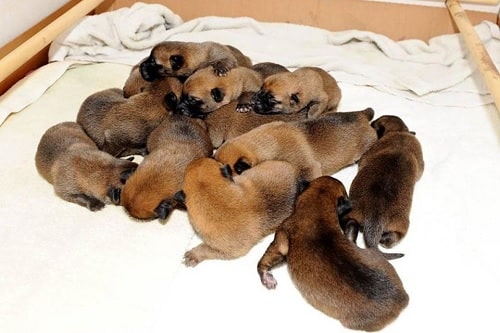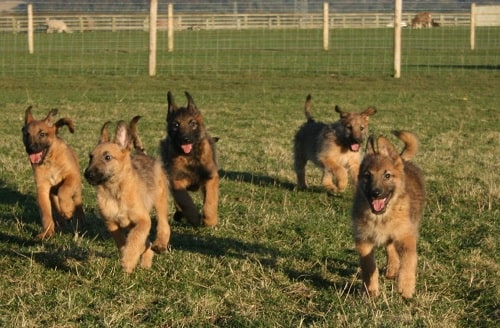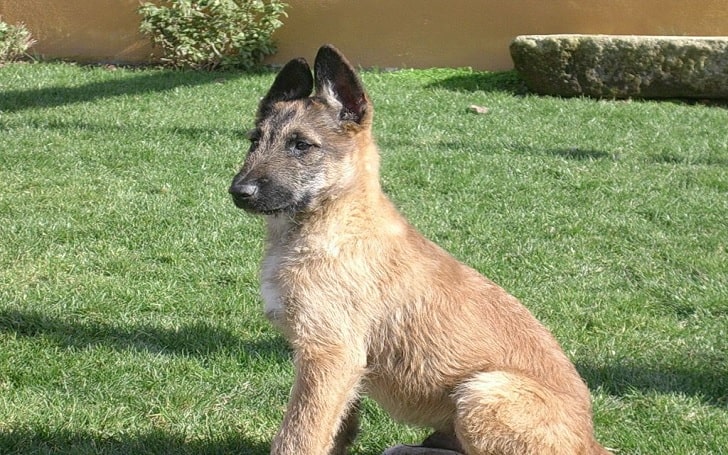Belgian Laekenois Puppies
Belgian Laekenois is a shepherd dog that is the native of Belgium. They are an affectionate, agile, and friendly temperament dog that is only suitable for a loving and active family. They do best with a family that is involved in animal farming.
The Belgian Laekenois can give birth to 5-7 puppies at a time. Here are the different stages of the puppies from birth to one year old and their behaviors.
Newborn
All the puppies including Belgian Laekenois are born blind, deaf, and toothless. They are fragile little puppies that are highly sensitive. As soon as the puppies are born, keep them near the mother in a warm blanket or other clothes. Do not bathe them or touch them with a bare hand as they are sensitive and the hand germs might spread in their body.
The mother keeps them warm, clean and takes care of them. Leave the puppies with the mother only unless you sense there are some health problems with the puppies. Provide the mother with healthy food so she can feed her puppies her breast milk which is rich in antibodies that protects them from harmful diseases.
Neonatal Stage (0-2 Weeks)
The period between newborn and 2 weeks is the neonatal stage. They are very dedicated and vulnerable at this age. The puppies are not able to see, hear or walk and they completely rely on their mother. The mother keeps them close and feeds them as well as help them pee and poop. She licks their belly which stimulates them to defecate and pee.

Image Source: [email protected]
Provide a clean and warm place for the mother where she can keep her puppies and take care of them. The puppies cannot generate heat on their own, so the mother keeps them cozy.
Transitional Stage (2-4 Weeks)
In this stage, the Belgian Laekenois puppies are able to hear and see the new world they are in. Their eyes open when they 10-12 days old but will still have a vivid vision. They can only see clearly in 16-20 days. They start to hear the sound at the end of the second week.
Puppies start to grow small teeth by now and by the third weeks, they begin to sample food from the plate of their mother. They communicate with other littermates and mother by whining and yelping. They also start walking slowly.
Socialization Stage (4-16 Weeks)
Socialization is a very important stage for the puppies as this is the age where they get to know people and canines other than their family. They are ready to explore their canine life and meet new people in their life.

Image Source: www.shutterstock.com
Leash train them before taking them out for socializing. After they are comfortable walking on the leash, you can take them to a park where you can introduce them to new people and other canines.
Juvenile Stage (3-6 Months)
The stage where the Belgian Laekenois puppies are taking their steps towards adulthood is called the juvenile stage. They slowly start to lose their puppy face and looks more of an adult dog. By this time, the puppies have matured the basic obedience training which should be reduced and they should be enrolled in agility.
The puppies are very lively and enthusiastic at this age and are eager to learn. So, give them proper training and establish good leadership upon them to make them an obedience dog.

Image Source: ResearchBreeder.com
The chewing and biting of the puppies increase due to their growing teeth. This behavior is natural, so do not punish or be harsh on them. They might be fearful and scared of you. Give them dog toys or manufactured bones to chew on.
Adolescence (6-12 Months)
After 6 months, you can consider Belgian Laekenois as a fully grown dog. They are an adult now and are sexually active too but it is not good for them and their health to involve them in breeding or mating. So, only start breeding when they are matured enough to be a mother, which is around 16-18 months old.
Be careful with their diets as they need nutritional, high-quality dog food. If some nutrients are lacking on their diet, provide them with supplements. Continue the training session of both obedience and agility.
Visit Doglime for more information about the puppy’s development and behavior.
Tags










